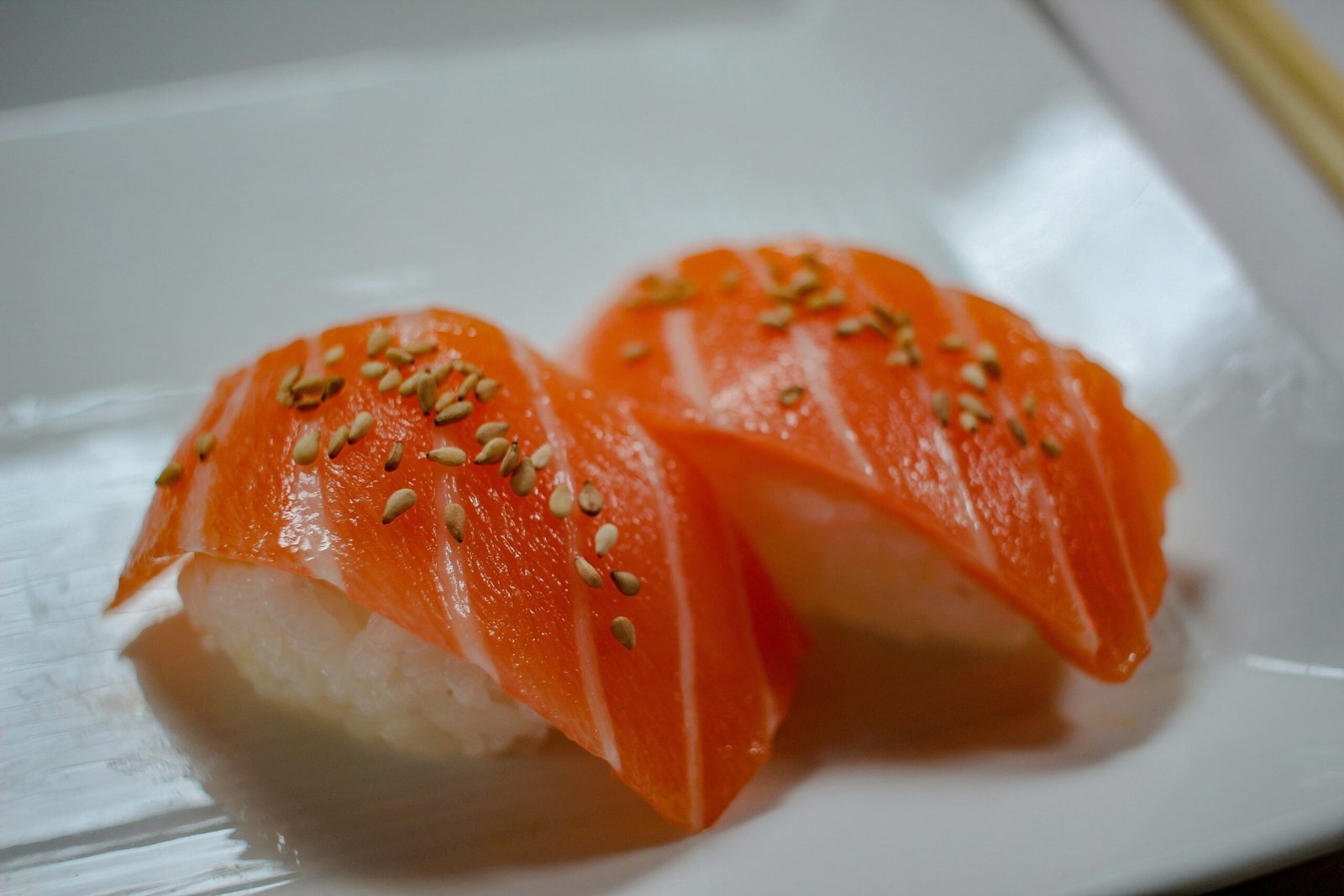
The History and Evolution of Sushi
Sushi’s history is rich, tracing back over centuries and spanning several regions. Its origins are rooted in ancient Southeast Asian preservation techniques, where fish was fermented with rice. This method, known as “narezushi,” involved packing fish in rice and allowing it to ferment over several months. This process not only preserved the fish but also imparted a unique flavor. The rice was discarded, and only the fish was consumed, marking the earliest form of what we now recognize as sushi.
As this practice spread to Japan around the 8th century, it evolved significantly. Japanese chefs began to adapt these techniques, gradually incorporating elements of their own culinary traditions. By the Edo period (1603-1868), sushi had undergone a transformative shift. The creation of “edomae-zushi” or “nigiri sushi,” characterized by slices of fresh fish served atop small vinegared rice balls, marked a significant departure from its earlier forms. This innovation was driven by the bustling urban culture of Edo (present-day Tokyo), where sushi became a convenient and popular street food, offering a quick and flavorful meal for city dwellers.
The development of sushi did not stop there. The 20th century saw sushi rise to global prominence. Post-World War II, Japan’s isolationist policies ended, and sushi began to capture the imagination of international audiences. Japanese immigrants introduced it to the United States, where it quickly gained popularity, leading to the creation of new sushi varieties such as the California Roll. These adaptations incorporated local ingredients, making sushi not only a beloved Japanese dish but a versatile and worldwide culinary marvel.
Today, sushi is celebrated globally, both in its traditional forms and through innovative interpretations. It stands as a testament to the blending of cultural influences and culinary artistry, continuing to evolve while honoring its storied heritage. The humble origins of sushi as a method of preservation have blossomed into a diverse and dynamic component of global cuisine.
Types of Sushi and Their Unique Characteristics
Sushi, a cornerstone of Japanese cuisine, encompasses a variety of types, each with distinct characteristics and culinary nuances. The most recognized type is nigiri sushi, a hand-pressed mound of vinegared rice topped with a slice of raw fish or seafood. Nigiri highlights the importance of rice quality and the fish’s freshness, demanding precision in knife skills to ensure the fish’s texture and flavor are optimally presented.
Maki sushi, or rolled sushi, consists of fish, vegetables, and rice, rolled in seaweed (nori). There are variations within maki, such as hosomaki (thin roll), futomaki (thick roll), and uramaki (inside-out roll). The balance of ingredients and the skillful rolling technique play crucial roles in achieving the ideal texture and blend of flavors. This type of sushi often includes regional specialties, such as the use of locally sourced vegetables or unique fish varieties, spotlighting the cultural diversity within Japan.
Sashimi, although often associated with sushi, stands apart as slices of raw fish or seafood served without rice. The simplicity of sashimi brings the quality of the fish to the forefront, requiring exemplary knife skills to enhance the fish’s natural flavor and presentation. Seasonal ingredients often dictate the choice of fish, reflecting the Japanese emphasis on fresh, high-quality components.
Temaki sushi, or hand-rolled sushi, is a more casual variant, where nori is wrapped around rice and fillings to form a cone shape. The art of preparation here lies in the precise assembly to ensure each bite offers a harmonious blend of textures and tastes. Like other sushi forms, temaki embraces seasonal and regional variations, particularly in its fillings.
Lastly, chirashi sushi (scattered sushi) features a bed of sushi rice topped with diverse ingredients, including fish, vegetables, and even edible flowers. This type celebrates an array of colors and flavors, often tailored to seasonal themes, and provides a comprehensive sensory experience.
The artistry behind each sushi type is not only in the preparation but also in the intricate details, from rice quality and fish selection to the blade’s craftsmanship. These factors collectively contribute to the authenticity and cultural richness of Japanese sushi, making it a revered culinary art form globally.
The Role of Sushi in Japanese Culture and Society
Sushi holds a venerable place in Japanese culture, embodying more than just culinary artistry. Deeply entwined with social gatherings and significant celebrations, sushi is a ubiquitous presence at various milestones, from weddings to business meetings, serving as both a communal and ceremonial cuisine. It stands as a testament to Japan’s dedication to precision and craftsmanship, elevating it to the pinnacle of Japanese culinary excellence.
An integral part of understanding sushi in Japanese society is recognizing the traditional etiquette that accompanies its consumption. For example, sushi is often eaten with the hands, particularly nigiri, which must be flipped to ensure that the fish, not the rice, touches the soy sauce, thereby preserving the delicate balance of flavors. Condiments like wasabi and pickled ginger serve specific functions—wasabi adds a hint of spice, while ginger acts as a palate cleanser. Such rituals highlight sushi’s meticulous nature and the attention to detail revered in Japanese culture.
Interactions with sushi chefs, or itamae, are also governed by tradition. Engaging with the itamae by showing respect and appreciation is considered crucial. This etiquette is not just a matter of decorum but an acknowledgment of the chef’s skill and dedication. The relationship between diners and chefs fosters a harmonious dining experience, shedding light on the broader social fabrics of Japanese society where respect and mindfulness play pivotal roles.
Sushi’s influence extends beyond the dining table, permeating Japanese identity and popular culture. It features prominently in media, from television shows to manga, further cementing its status as a cultural icon. The aesthetic principles guiding sushi presentation—such as simplicity, balance, and harmony—are deeply rooted in traditional Japanese art and philosophy. These principles reflect broader aesthetic values seen in other elements of Japanese culture, like ikebana (flower arranging) and tea ceremonies.
Ultimately, sushi’s cultural significance is multi-faceted, underscoring it not only as a culinary delight but as a reflection of Japan’s rich cultural heritage, social norms, and artistic values.
Sushi Around the World: Global Influence and Fusion Trends
Sushi, a culinary tradition deeply rooted in Japanese culture, has traversed oceans and continents to become a beloved cuisine in many countries worldwide. This journey has propelled sushi beyond its traditional forms, paving the way for fascinating variations and creative fusions, while also presenting unique challenges.
In the United States, the California roll epitomizes the fusion trend, blending classic sushi elements with local ingredients like avocado and imitation crab. This innovation has inspired other creative interpretations, such as the Philadelphia roll featuring cream cheese and smoked salmon, or the tempura-fried rolls that have become popular in many Western countries. These adaptations often cater to local palates while ensuring the core essence of sushi is retained.
Across Europe, sushi’s global influence is evident in places like London, where avant-garde chefs experiment with flavors and ingredients. Scandinavian countries have embraced sushi with a twist, incorporating native fish varieties such as herring or salmon, and adapting rice seasoning to fit regional taste preferences. Meanwhile, Latin American countries have birthed vibrant sushi variations, like the Peruvian “Nikkei” cuisine, which fuses Japanese techniques with indigenous ingredients like ají peppers and quinoa.
However, the global proliferation of sushi is not without its controversies. Traditional sushi artisans argue that authenticity is compromised when local adaptations stray too far from Japanese practices. Sustainability also poses a significant concern; the rising demand for sushi worldwide has led to overfishing, threatening species like bluefin tuna. Some chefs and restaurants address these concerns by sourcing locally caught, sustainable fish or offering vegetarian and vegan sushi options as alternatives.
Notable sushi chefs and establishments have significantly impacted the global sushi landscape. Chefs like Nobu Matsuhisa and Jiro Ono have gained international acclaim, blending tradition with innovation to redefine sushi. Restaurants such as Sukiyabashi Jiro in Tokyo, Sushi Nakazawa in New York, and Sushi Sho in Stockholm have garnered prestigious accolades, setting benchmarks for quality and craftsmanship.
In conclusion, as sushi continues to evolve globally, it faces the dual challenge of innovation and authenticity. Understanding and respecting its cultural origins while embracing creative adaptations can ensure that sushi remains a celebrated culinary art form worldwide.

